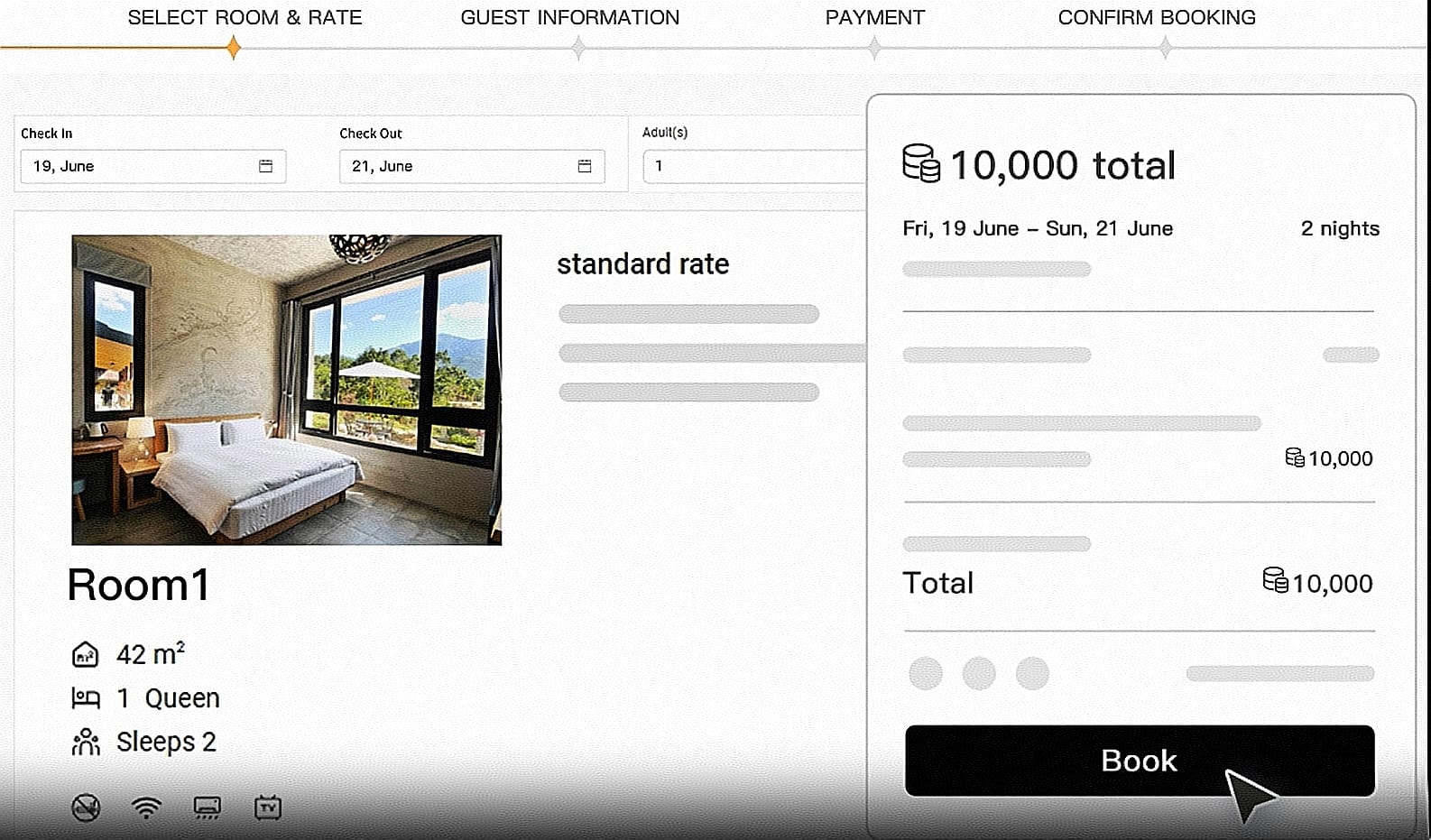Running a vacation rental can feel unpredictable. Some months are packed with guests, rates go up, and every night is booked. Other times, it’s quiet, and you’re worrying about empty calendars and fixed costs. But there’s a middle ground that often gets overlooked—the shoulder season. It’s not as busy as peak season, but people are still traveling. With the right approach, this slower period can bring in steady income. In this article, we’ll look at what shoulder season means, how to figure out when it happens for your property, who tends to travel during this time, and how to turn it into a strong part of your business strategy.
What is shoulder season?
Shoulder season refers to the transition period between a destination's peak and off-season periods. These months typically share three characteristics:
• Weather conditions remain favorable
• Visitor numbers decrease significantly
• Prices are higher than off-season levels
Typical Example
For a seaside resort:
Peak Season: July-August (peak summer family travel season)
Off-Season: December-January (cold and rainy season)
Shoulder Season: April-May or September-October (mild weather, moderate visitor traffic, and stable rental demand)
Core Value
For travelers: Enjoy a more relaxed travel experience, avoiding crowds
For property owners: Create sustainable revenue opportunities, effectively:
• Fill unused occupancy gaps
• Cultivate a repeat customer base
• Experiment with innovative services (less operational pressure than during peak season)
How to determine your shoulder season?
Figuring out your shoulder season isn’t a one-size-fits-all process. It depends entirely on your location and what draws people to it. Here’s how to pinpoint yours:
Looking at your booking data from the past year. Which months have steady but not overwhelming reservations? These are likely your shoulder months. For instance, if a mountain cabin gets 90% occupancy in December (ski season) and 10% in July (too hot for hiking), but 40-50% in April and November, those are your shoulder seasons.
Studying local events and weather patterns. A city with a famous fall festival might see a bump in October, making it part of the shoulder season. A coastal rental might have a shoulder season in spring, when the rain stops but summer crowds haven’t arrived. Check local tourism boards—they often publish reports on busy and slow periods.
Watching your competitors. What months are other rentals in your area offering discounts or special deals? Those are clues that demand is there but not high enough for peak pricing, which points to shoulder season.
Know your shoulder season audience
To boost revenue in shoulder season, you need to know who’s booking—and why. Unlike peak season, when travelers are often families or tourists chasing specific events, shoulder season guests have different motivations.
Local explorers are a big group. People who live within a few hours of your rental often use the shoulder season for quick getaways. They want to escape the city without the hassle of peak crowds or high prices. A weekend trip to a cozy cabin or a beach house for a long weekend fits their plans perfectly.
Remote workers and digital nomads are another key audience. With flexible schedules, they’re happy to travel during off-peak times to avoid distractions. They look for rentals with strong Wi-Fi, a dedicated workspace, and a quiet environment—all things you can highlight in your listing.
Cultural and outdoor enthusiasts also thrive in shoulder season. Hikers, bird-watchers, or art lovers seek destinations when trails are empty or museums aren’t packed. If your rental is near national parks, historical sites, or local galleries, these travelers will book in shoulder season to enjoy those attractions at their own pace.
Tips to make the most of the shoulder season
Now that you know your shoulder season and who’s traveling, let’s dive into strategies to boost revenue. These tips focus on attracting guests, pricing smartly, and creating experiences that keep them coming back.
1. Adjust prices flexibly
Static prices in shoulder season may lose revenue. Use tools to change rates based on demand, competitors’ prices, and how early guests book. For example, lower prices a bit on weekdays to attract remote workers, and raise them on weekends for short-stay visitors. Keep the base price flexible and check booking data often to tweak it.

2. Run targeted promotions
Shoulder season is great for niche deals. Try "Stay 3, pay 2," weekday packages, or monthly discounts. Use social media and emails to tell potential guests. Add seasonal themes: for a fall cabin, highlight firepits and autumn hikes; for a spring coastal rental, promote quiet beaches and local seafood festivals.
3. Focus on local and nearby travelers
Long trips drop in shoulder season, so target people who can drive. Partner with local influencers or run ads for cities within 3–5 hours away. Emphasize perks like no flights, fewer crowds, and good value. Many look for easy, last-minute getaways without much planning.
4. Make spaces good for workcations
Remote work is popular—cater to digital nomads to keep rooms full. Add comfy chairs, reliable Wi-Fi, extra power outlets, and small desks. Promote your place as a quiet spot: "Zoom in the morning, explore in the afternoon." These guests often stay longer, boosting revenue with fewer check-ins.
5. Team up with local businesses
Work with local restaurants, tour groups, or spas to make shoulder season packages. Guests love deals like "stay + kayak," "stay + wine tour," or "midweek spa + breakfast." These partnerships add value, support local shops, and make your offers unique.
6. Update listings and keywords
Refresh your property descriptions to highlight shoulder season perks: quiet surroundings, off-season events, and unique experiences. Use simple keywords like "off-season getaway" or "quiet rental." Make sure your website and listing pages show current seasonal content—this helps guests find you in searches.
7. Reward returning guests
Turn one-time visitors into regulars. Offer discounts or perks like free upgrades, early check-ins, or longer stays. Email past guests to invite them back, mentioning new features or deals. Small personal touches build long-term loyalty, even when demand is low.
8. Highlight shoulder season vibes
Change your listing to focus on what’s special about the season. For example: "April mountains—wildflowers, no crowds." Add photos of your place in shoulder season: a patio with fall leaves, or a cozy room with a fire. Mention local perks: spring farmers’ markets, fall winery tours, or hiking trails before summer heat.
9. Pay attention to guest experience
Small touches matter in shoulder season. Stock season-specific items: extra blankets and board games in fall; sunscreen and fresh flowers in spring. Leave a note with tips—like the best time to visit a quiet garden or a hidden café. After their stay, send a quick email: "Liked the trails? We have a November discount—let us know to book!" This keeps your place in their mind.
Final thoughts
Shoulder season isn’t a problem to solve—it’s an opportunity to grow. By understanding when it happens, who’s traveling, and how to cater to them, you can turn those “in-between” months into a reliable source of revenue. Dynamic pricing keeps your rates competitive, tailored packages add value, and focusing on guest experience builds loyalty. With these strategies, your vacation rental won’t just survive shoulder season—it will thrive.
So, take a look at your calendar, study your data, and start planning. The guests are out there—they just need a reason to choose your rental. Give them that reason, and watch your shoulder season become one of your busiest (and most profitable) times of the year.

